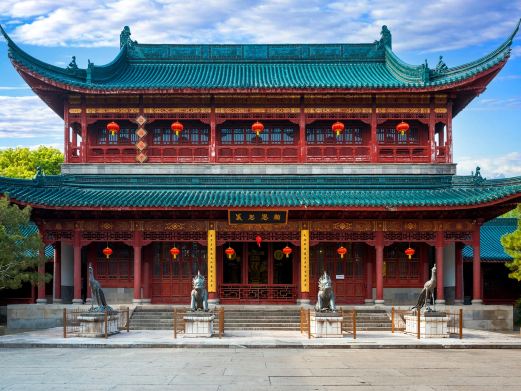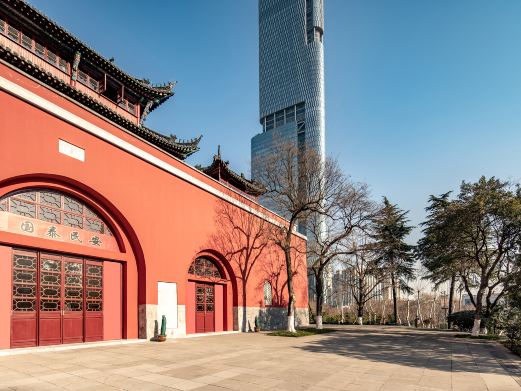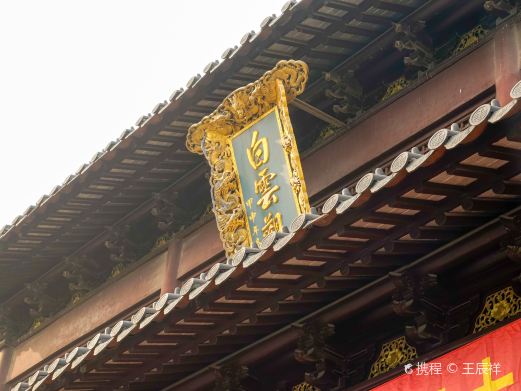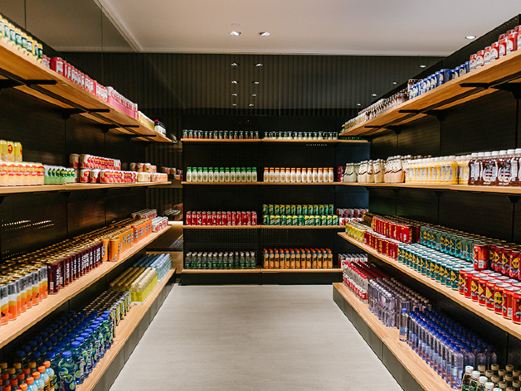Renli in Jixi is a typical ancient Huizhou village. So far, a large number of buildings from the Yuan, Ming and Qing dynasties are still preserved in the village. Renli in Jixi is surrounded by mountains and rivers. It has a profound cultural accumulation and is truly the ‘hometown of Cheng and Zhu in ancient Huizhou’. Historically, Renli in Jixi was a water and land wharf where Huizhou merchants gathered. It was a place of gathering wealth and accumulating qi. There were thousands of households and countless stoves. There is a saying that ‘Jixi County is small, but Renli Village is large’. It is an important town on the ancient Huizhou-Hangzhou ancient road. In the village, there are historical remains such as ancient city gates, ancient ancestral halls, ancient archways, ancient dwellings, ancient academies, ancient docks, ancient peach blossom dams, and ancient wells. This fully shows the image of Renli Village in Jixi as an important commercial town in Huizhou’s history. At the same time, Renli is also a place favored by the minister of works. Renli was originally the birthplace of the Geng surname in Jixi. According to the ‘Genealogy of the Geng Family in Yuchuan’, in the fifth year of Datong in the Liang Dynasty of the Southern Dynasties (539), Geng Yuanjin, the minister of works, and Geng Rujin, the general who assisted the country and guarded the heaven (who had served as the prefect of Hangzhou), were on their way back home in full glory. Because they admired the landscapes of Xin’an, they traveled here with their younger brother Geng Rujin. In Renli, Liang’an (Jixi), seeing that the place was surrounded by mountains and waters with beautiful scenery, they did not hesitate to give up their native place and move here. They named the village ‘Renli’. Later, this place became a village inhabited by the Cheng family for generations, so it was also called Chengli. Due to the rapid population expansion, it was renamed Darenli in the late Ming and early Qing dynasties. The Cheng family in Renli originated from Huangdun in Shexian. The first ancestor is named Yao Gong, also known as Yao Yi. His courtesy name is Dongsheng. He is the eighteenth generation grandson of Duke Cheng Zhongzhuang. In the first year of Guanghua in the Tang Dynasty (898), he was recommended as the magistrate of Jinxiang County. Because he admired the beautiful landscapes in Renli area, he moved his whole family here to settle. Before the Cultural Revolution, there were more than ten stone archways in the village, mostly chastity archways. Now there are two remaining. Among them, the Huangmengong Archway is particularly eye-catching (existing remains). It is said that this archway was erected for a villager who served as a minister in the imperial court (an official serving by the emperor). There is also a tomb passage archway for the first ancestor of the Cheng family in the village. The horizontal inscription on it is engraved with ‘Tomb Passage of Yao Gong, Magistrate of Jinxiang County in the Tang Dynasty’. This is a tomb passage archway with complete inscriptions existing in Jixi and also the archway with the longest history. Opening hours: Open all year round from 07:30 to 17:30. Preferential policies: Children: Free for those under 6 years old (inclusive) or under 1.2 meters in height (inclusive); Preferential treatment for minors aged 6 (exclusive) to 18 years old (with valid certificates). Elderly: Free for those aged 65 years old (inclusive) and above (with ID card and senior citizen card); Preferential treatment for those aged 60 (inclusive) to 65 years old (exclusive) (with ID card and senior citizen card). Students: Preferential treatment for full-time undergraduate and below students. Supplementary note: The above information is for reference only. Specific information should be subject to the content disclosed by the scenic spot on the same day.
Qiannian Renli
Renli in Jixi is a typical ancient Huizhou village. So far, a large number of buildings from the Yua[...]









